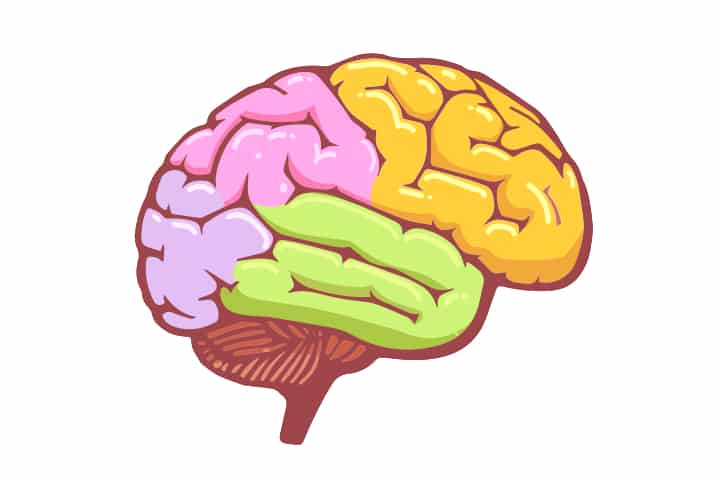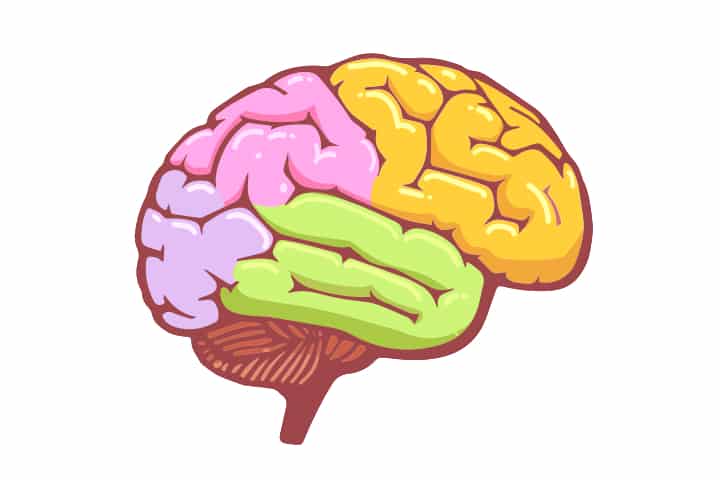Number of Brain Cells the Baby Has Compared to the Number of Brain Cells That Adult Human Have
Statistics | Milestones | When does the encephalon end developing | Experience-dependent | Critical periods & Plasticity | Nature vs nurture | Early Years
Brain Development
Early babyhood is a fourth dimension of tremendous brain development. The immature encephalon literally changes shape and size in response to everything encountered in the early years. New environments, life experiences, caretakers, and relationships tin can all bear upon the way complex brain circuits are wired. This network of synaptic connections will ultimately make up one's mind brain role and the development of behavior.
Statistics
- An infant'due south brain at nascency has roughly 86 billion brain cells (neurons) 1 , virtually all the neurons the man brain will e'er have 2 .
- Although a newborn has about the same number of neurons every bit an developed, it has simply 25% of the adult size.
- Infant'due south neurons are connected by only roughly 50 trillion neural connections, called synapses, whereas an adult brain has about 500 trillion of them 3 .
- Past historic period three, the synaptic connections accept grown to 1000 trillion.
- A child'south brain volume reaches ninety% completion roughly by age 5 4 .
- During adulthood, the synaptic density will be half that of a toddler at age two.

Early Developmental Milestones
Here are some of the childhood development milestones:
- Week 3 post-conception – neuron product begins in the fetal encephalon.
- At birth – auditory system matures 5 .
- v weeks – learning and memory formation.
- 9 months – large motor skills.
- 1 year 3 months – speech.
- one.5 years – fine motor skills.
When Does the Brain Stop Developing
On average, the brain stops developing around historic period 25. Although an individual's brain growth trajectory can vary slightly, most people's good for you encephalon development is complete in their mid-20s.
The prefrontal cortex is the last brain region to develop.
Withal, it doesn't hateful the brain stops changing.
Forming and irresolute interconnections in our brain is an ongoing process that takes place throughout our lives. Only as nosotros historic period, they practise so at a much slower rate.
The experience-dependent encephalon
One of the nigh prominent characteristics of human brain evolution is synaptic pruning.
The network of synapses grows quickly during the get-go year and continues to practice so during toddlerhood.
Life feel will activate certain neurons, create new connections betwixt neurons and strengthen existing connections, called myelination.
Unused connections will eventually be eliminated during synaptic pruning six .
Synaptic pruning is the neuronal procedure in which unused neurons and synapses are eliminated to increment efficiency in neuronal transmissions. This process occurs afterward synaptic growth betwixt early childhood and puberty.
Considering life experiences can literally shape the brain, babies can suit flexibly to whatsoever surround they're born into vii .
But that also ways what parents do or don't practice during the formative years tin can have a profound impact on the child's salubrious development – mental health and concrete health.

Critical Periods & Plasticity
Within early childhood, developmental timing is also important. There are windows of time when different regions of the brain get relatively more sensitive to experiences.
This catamenia of childhood brain development is called a critical period or sensitive period.
During a critical period, synaptic connections in certain brain regions are more plastic and malleable. Connections are formed or strengthened given the appropriate childhood experiences. Later on the critical period has passed, the synapses get stabilized and less plastic.
For example, language learning is much easier for immature children. They tin learn a nonnative language and attain proficiency more hands before puberty. Then the sensitive catamenia for language development is from birth to earlier puberty.

Also See: Benefits of Sensory Play to Brain Development

Nature vs Nurture In Child Development
Besides influencing the development of brain architecture, early life experience has another significant affect on a kid'south development.
A large corporeality of scientific evidence indicates that life experience can impact gene expression — how information in a gene is used (epigenetics) — in some cases past slowing or shutting the genes off, and in others by increasing their output eight .
This is why identical twins are non carbon copies of each other.
Although their genes (Dna code) are identical, their epigenetic markers are unlike from nativity and continue to diverge every bit they collaborate with the surroundings in distinctive ways.
Fifty-fifty more important, these epigenetic changes can exist permanent and passed downwards from generation to generation.
In the age-old nature-versus-nurture contend, epigenetics offers a surprising center ground.
Genes are greatly of import, simply so are ecology factors.
As well See: Specific Learning Disability
The Early Years Thing
Childhood is a time of tremendous sensitivity, a time when feel bestows lasting effects 9 .
Quality experience in everyday experience is so important in the early on years.
Developmental outcomes can be seriously impacted if kids are deprived of basic social and emotional nurturing in this developmental process.
This is confirmed past various inquiry.
For instance, studies evidence that differences in socioeconomic status (SES) can result in disparities in brain structure. Extreme poverty is associated with lower grayness matter book and academic achievement x .

Likewise See: Asynchronous Development Of A Gifted Child And Their Unique Needs
Final Thoughts on Brain Development
Neuroplasticity and epigenesis are two major cornerstones in understanding a kid's neurological and encephalon evolution in the early years.
While we don't need to be perfect parents (and who tin can exist?), good enough parenting tin exercise a kid tremendous proficient.
In particular, amidst the different parenting styles, authoritative parenting is the best parenting mode associated with the best outcome. Adverse childhood experiences (ACE), on the other hand, tin can lead to toxic stress and devastating consequences.
Early on childhood education is also of import to a child'southward cerebral functions and growth. Finding good babyhood care providers and choosing a quality preschool for your child can also benefit their development in the long term.
References
-
1.
Azevedo FAC, Carvalho LRB, Grinberg LT, et al. Equal numbers of neuronal and nonneuronal cells brand the human brain an isometrically scaled-upward primate encephalon. J Comp Neurol. Published online April 10, 2009:532-541. doi:10.1002/cne.21974
-
3.
Gauvain M, Cole Yard. Readings on the Development of Children. fifth ed. Worth Publishers; 2008.
-
4.
Lebel C, Walker 50, Leemans A, Phillips L, Beaulieu C. Microstructural maturation of the human brain from babyhood to adulthood. NeuroImage. Published online April 2008:1044-1055. doi:10.1016/j.neuroimage.2007.12.053
-
5.
McMahon Due east, Wintermark P, Lahav A. Auditory brain development in premature infants: the importance of early experience. Annals of the New York Academy of Sciences. Published online April 2012:17-24. doi:10.1111/j.1749-6632.2012.06445.x
-
6.
Tau GZ, Peterson BS. Normal Evolution of Brain Circuits. Neuropsychopharmacol. Published online September thirty, 2009:147-168. doi:10.1038/npp.2009.115
-
8.
Stiles J, Jernigan TL. The Basics of Brain Development. Neuropsychol Rev. Published online November 3, 2010:327-348. doi:10.1007/s11065-010-9148-4
-
nine.
Balbernie R. Circuits and circumstances: the neurobiological consequences of early relationship experiences and how they shape after behaviour. Journal of Child Psychotherapy. Published online Jan 2001:237-255. doi:x.1080/00754170110087531
-
ten.
Hair NL, Hanson JL, Wolfe BL, Pollak SD. Association of Kid Poverty, Brain Evolution, and Bookish Accomplishment. JAMA Pediatr. Published online September one, 2015:822. doi:10.1001/jamapediatrics.2015.1475
Source: https://www.parentingforbrain.com/brain-development/
0 Response to "Number of Brain Cells the Baby Has Compared to the Number of Brain Cells That Adult Human Have"
Post a Comment